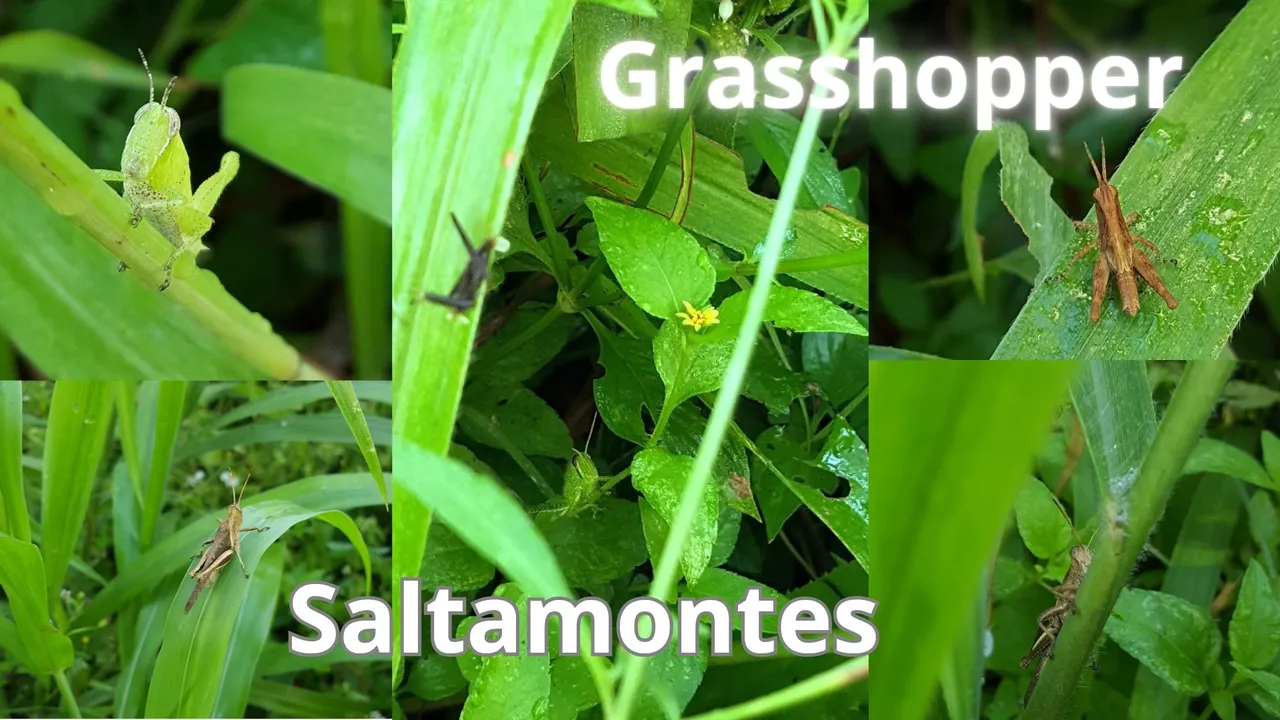
Here I show you how amazing nature is in its diversity that I was able to observe in a small area of land with wild plants in a vacant lot in Caracas city.
Walking through the wet grass I saw insects with very long hind legs that allow them to hop quickly and that we commonly call grasshoppers. It rained during the night and there was high humidity.
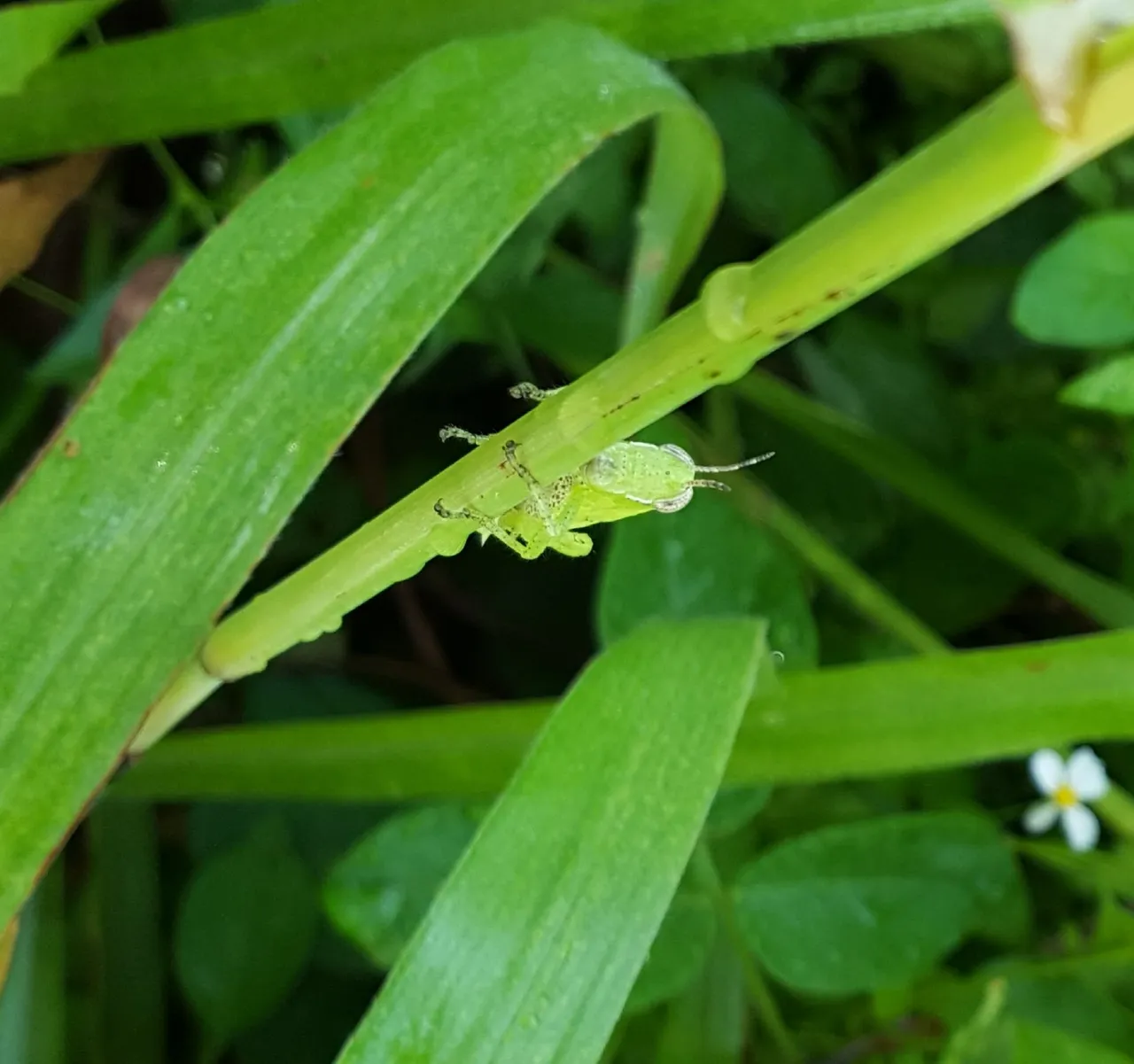
There I could notice differences in the size and color of the grasshoppers and possibly they are different species although the colors can also differentiate the sex of the grasshopper, the females are usually darker as it usually happens in many animal species where the male attracts the female with its bright colors.
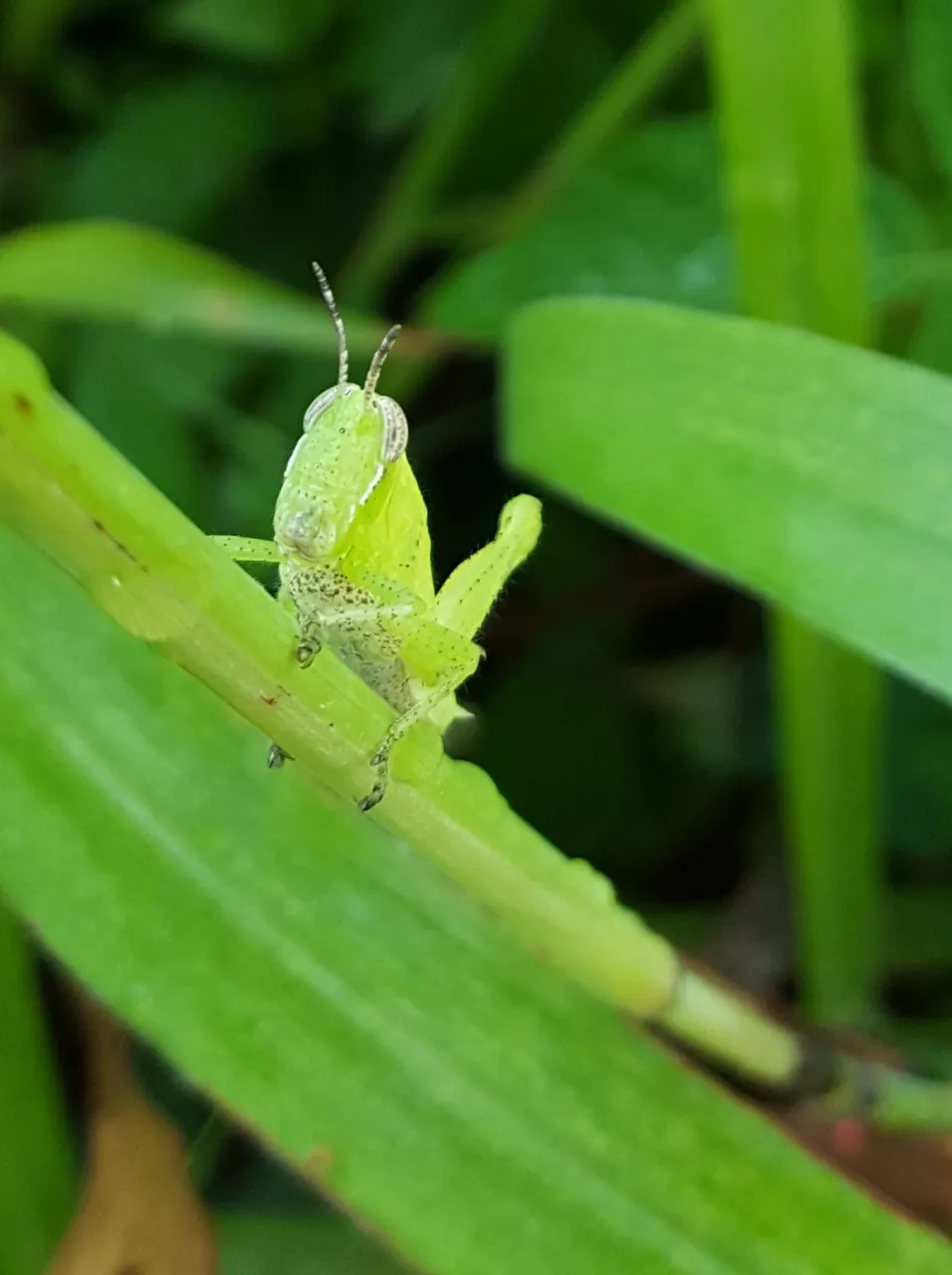
The green grasshopper is the species Tettigonia viridissima, it was solitary among the leaves, in the humid environment that it likes. Its color allows it to camouflage itself among the vegetation and protect itself from predators.
It seems to hide behind the leaf.
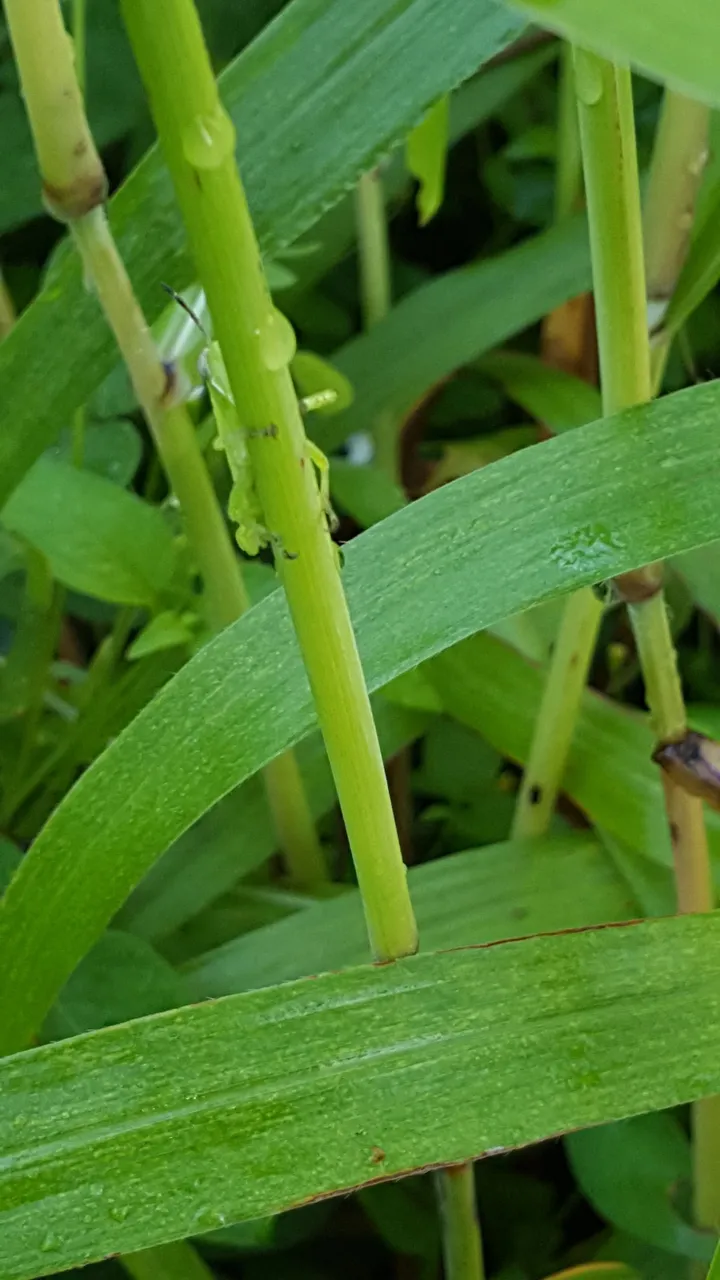
I also observed a smaller brown grasshopper that was perched on a leaf after doing some research on it, the species is Abracris flavolineata.

The surface of its body is very beautiful and the antennae are short. The wings are long and straight, it can fly like locusts, the family to which it belongs.
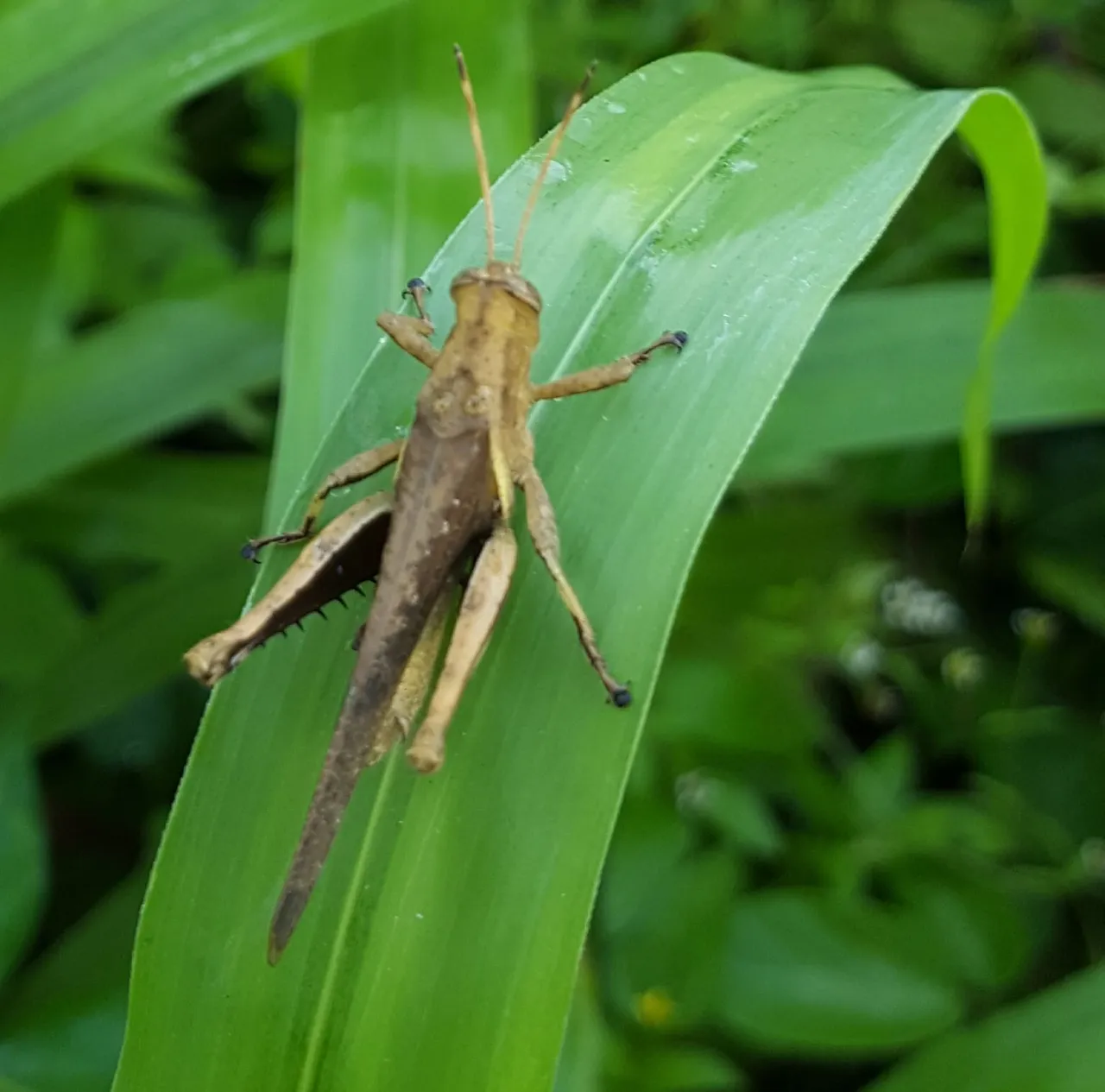
This beautiful grasshopper has short wings and antennae and its color is a bright brown that catches the eye, it was also on the leaf surface, possibly feeding. I had a hard time looking for information on the species and it is because it has not reached its adult stage, it is a nymph. Characteristics such as color and wing size may change with development. Its color unlike the green grasshopper exposes it to predators because of the contrast of colors. In dark colored leaves or in the ground it can hide from other animals that feed on it such as insectivorous birds.

Behind a leaf I could observe another grasshopper apparently different from the others, but it was not very visible, so I could not check it. But there it was, forming part of that small ecosystem.
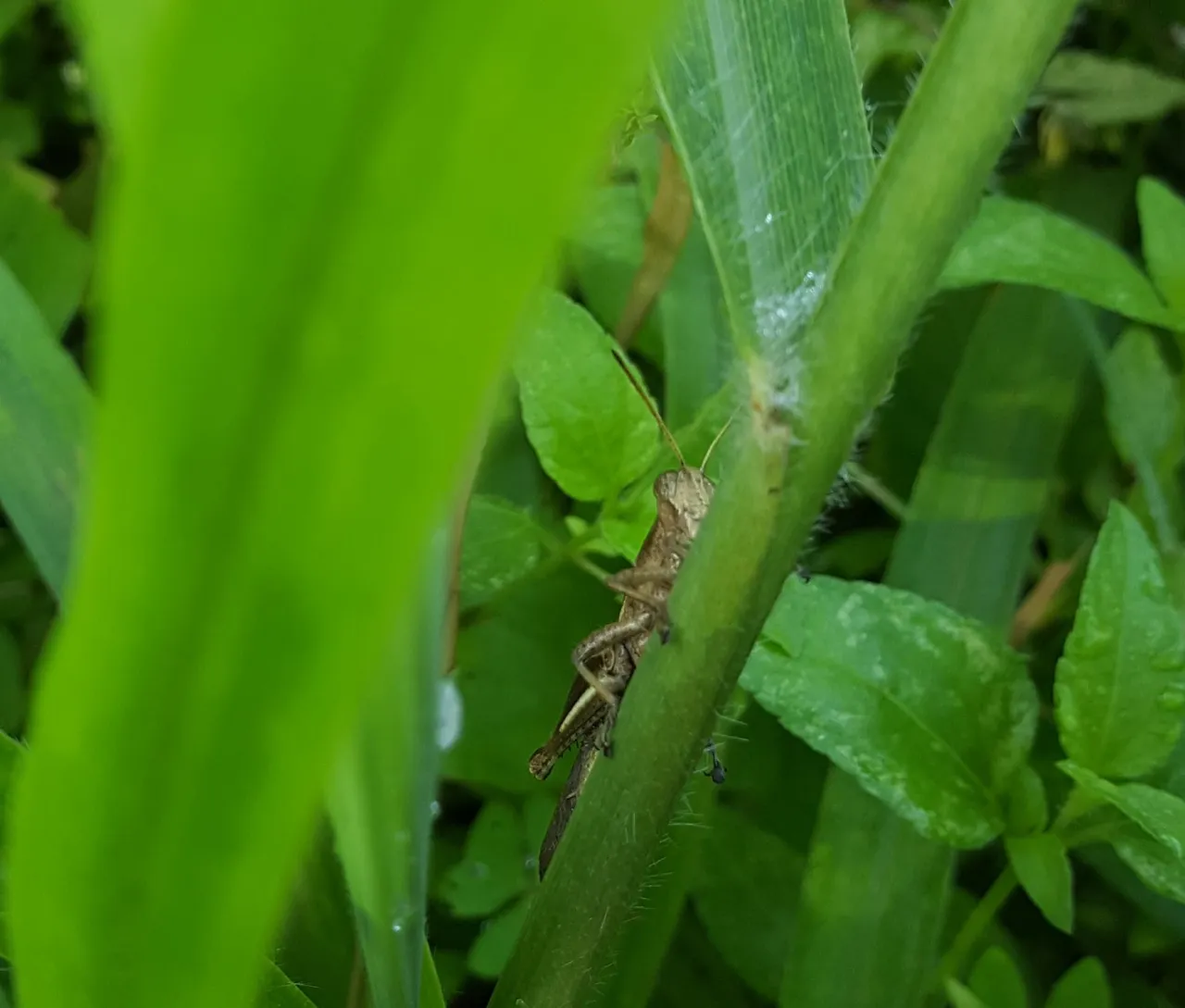

So far my publication, I hope you like it and thanks for reading.

All photos were taken by me with a Samsung edge S6 phone.
I thank Dr Humberto Giraldo for his valuable help in determining the nymph stage.
https://www.naturalista.mx/taxa/146635-Dichromorpha-viridis/browse_photos
https://ecuador.inaturalist.org/taxa/119627-Abracris-flavolineata
https://www.google.com/amp/s/www.lavanguardia.com/participacion/las-fotos-de-los-lectores/20230105/8666994/microclima-saltamontes-verde.amp.html